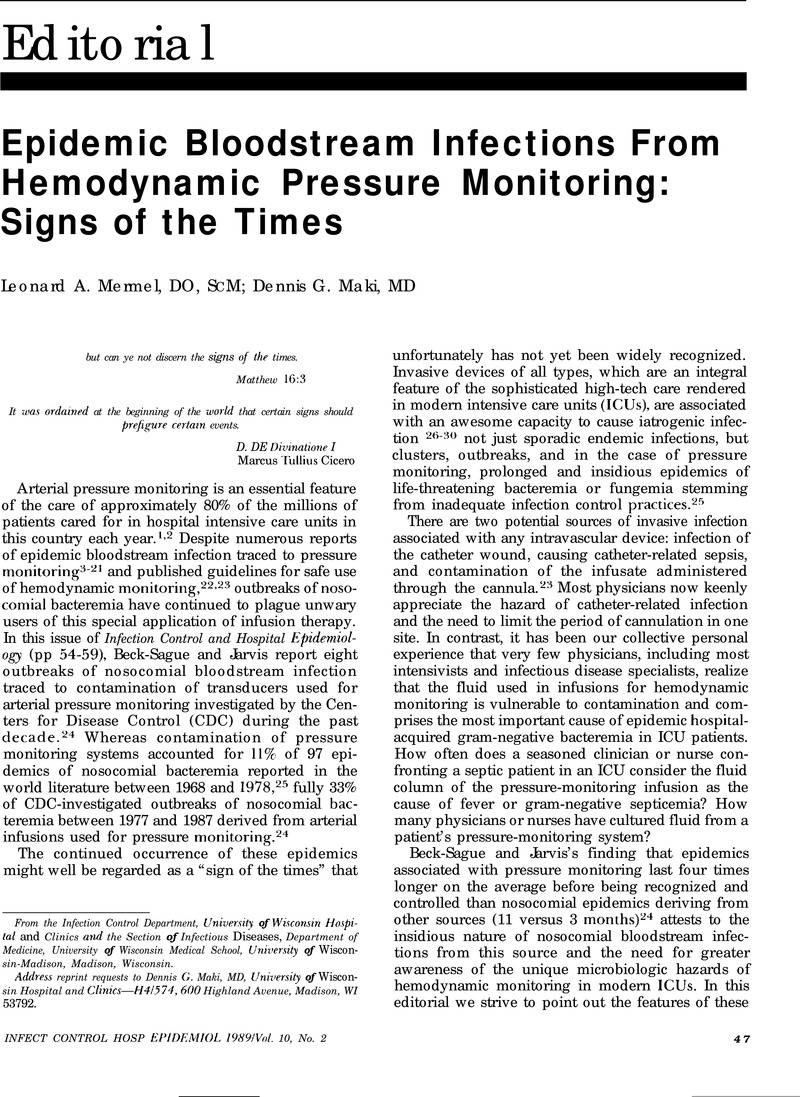Crossref Citations
This article has been cited by the following publications. This list is generated based on data provided by Crossref.
Kropec, Andrea
and
Daschner, Franz Dieter
1991.
Procedure-related infections and preventive measures.
Baillière's Clinical Anaesthesiology,
Vol. 5,
Issue. 1,
p.
101.
Ransjö, U.
Good, Z.
Jalakas, K.
Kühn, I.
Siggelkow, I.
Åberg, B.
and
Anjou, E.
1992.
An outbreak of Klebsiella oxytoca septicemias associated with the use of invasive blood pressure monitoring equipment.
Acta Anaesthesiologica Scandinavica,
Vol. 36,
Issue. 3,
p.
289.
Kappstein, I.
and
Daschner, F.
1995.
Anästhesiologie.
p.
1083.
Pearson, Michele L.
1996.
Guideline for Prevention of Intravascular-Device–Related Infections.
Infection Control & Hospital Epidemiology,
Vol. 17,
Issue. 7,
p.
438.
Quaid, Gina
and
Solomkin, Joseph S.
2000.
Multiple Organ Failure.
p.
309.
O’Grady, Naomi P.
Alexander, Mary
Dellinger, E. Patchen
Gerberding, Julie L.
Heard, Stephen O.
Maki, Dennis G.
Masur, Henry
McCormick, Rita D.
Mermel, Leonard A.
Pearson, Michele L.
Raad, Issam I.
Randolph, Adrienne
and
Weinstein, Robert A.
2002.
Guidelines for the Prevention of Intravascular Catheter-Related Infections.
Pediatrics,
Vol. 110,
Issue. 5,
p.
e51.
Dogan, H. Serkan
Şahin, Ahmet
Çetinkaya, Yeşim
Akdogan, Bülent
Özden, Ender
and
Kendi, Sezer
2002.
Antibiotic Prophylaxis in Percutaneous Nephrolithotomy: Prospective Study in 81 Patients.
Journal of Endourology,
Vol. 16,
Issue. 9,
p.
649.
Kumar, Anand
Kethireddy, Shravan
and
Darovic, Gloria Oblouk
2013.
Catheter-Related and Infusion-Related Sepsis.
Critical Care Clinics,
Vol. 29,
Issue. 4,
p.
989.



